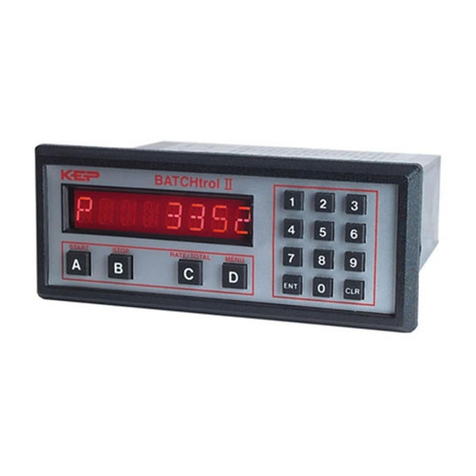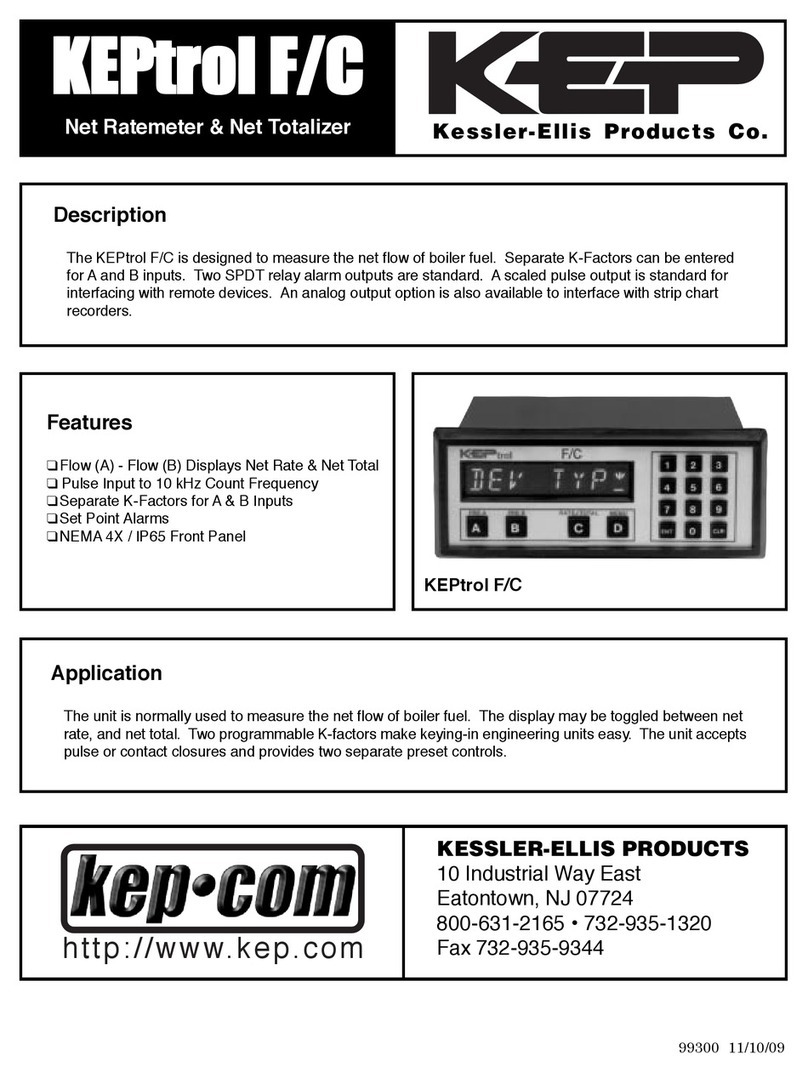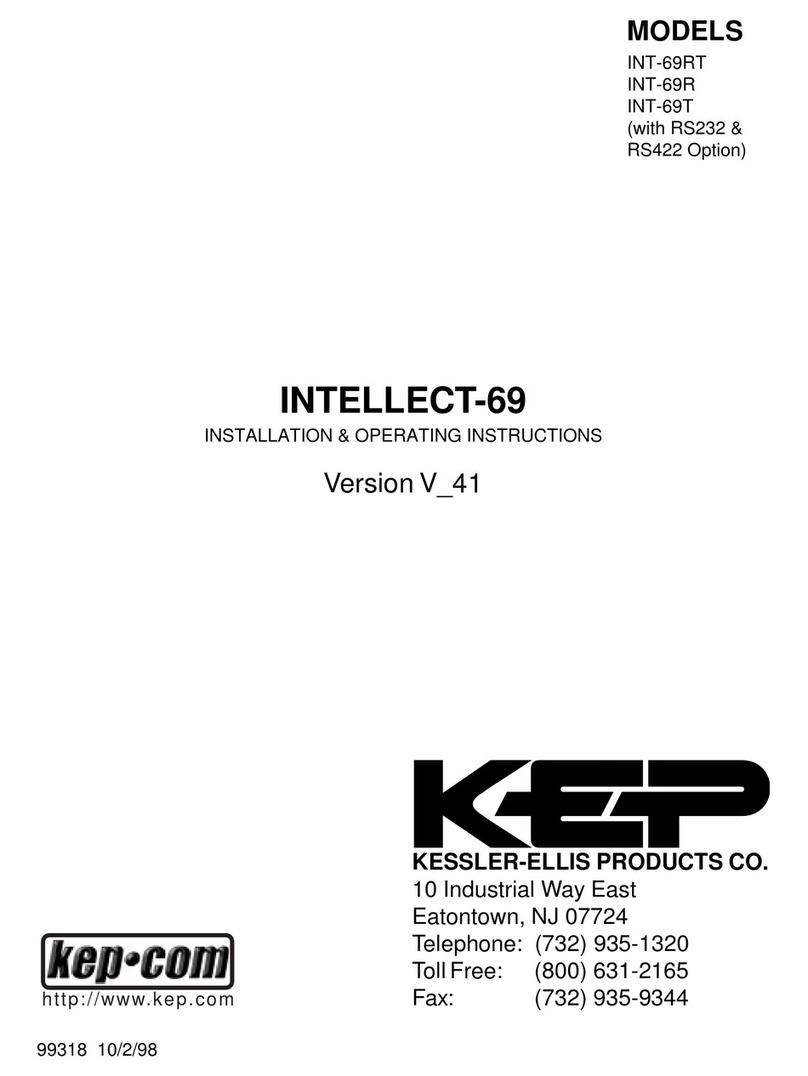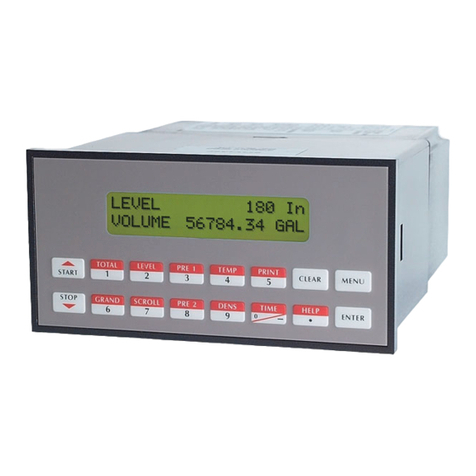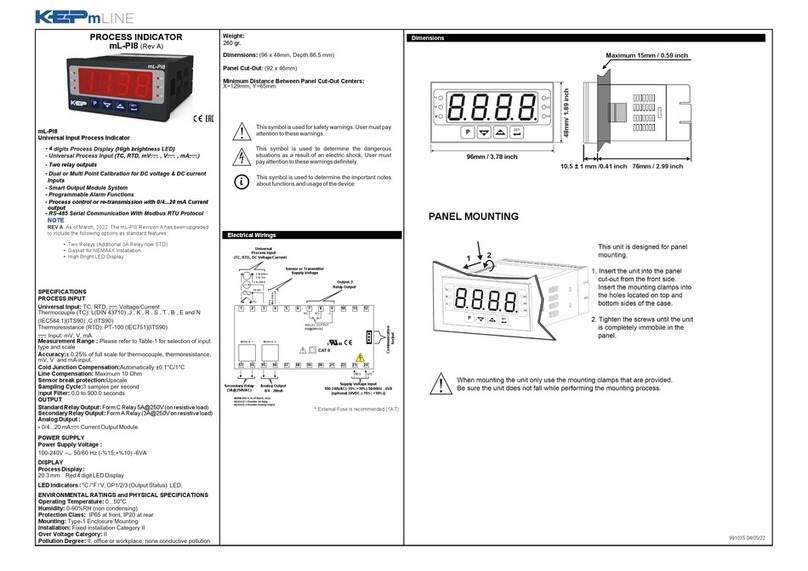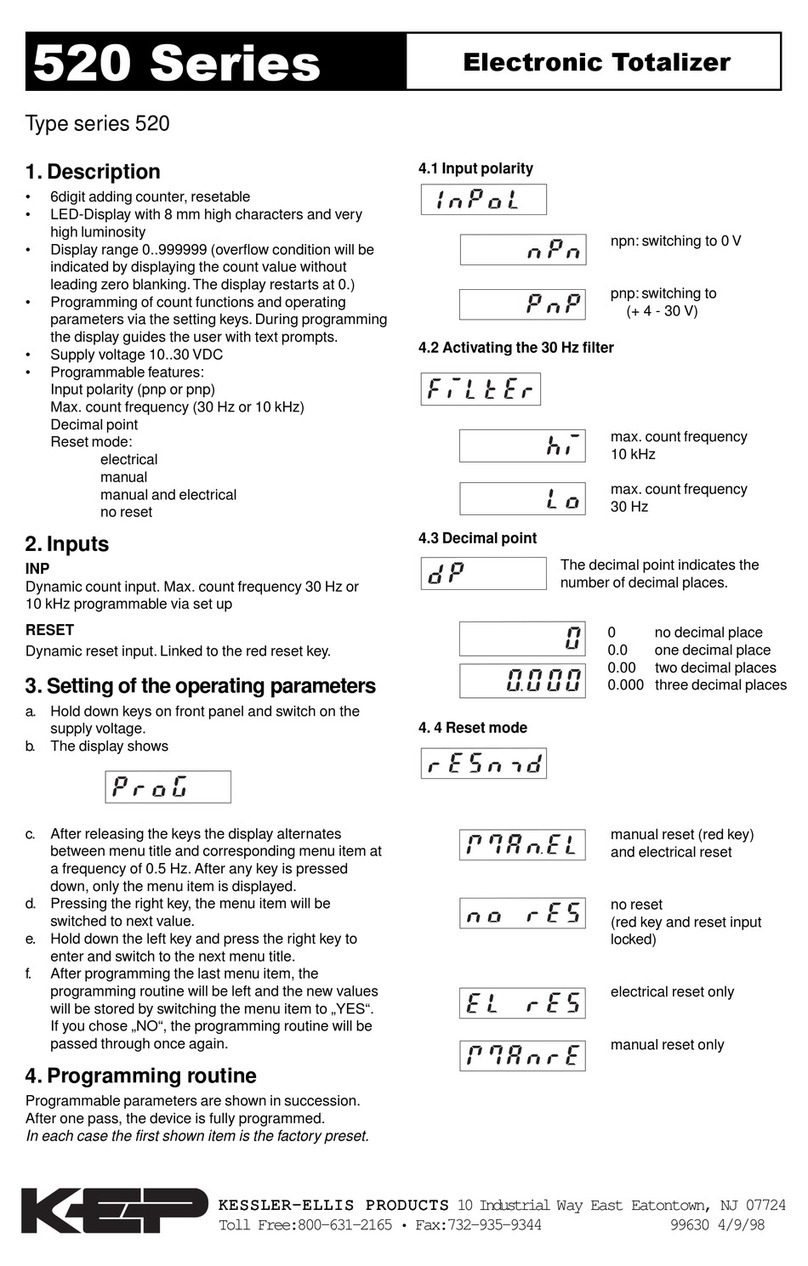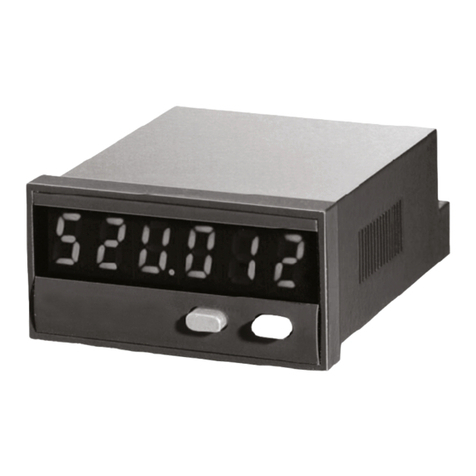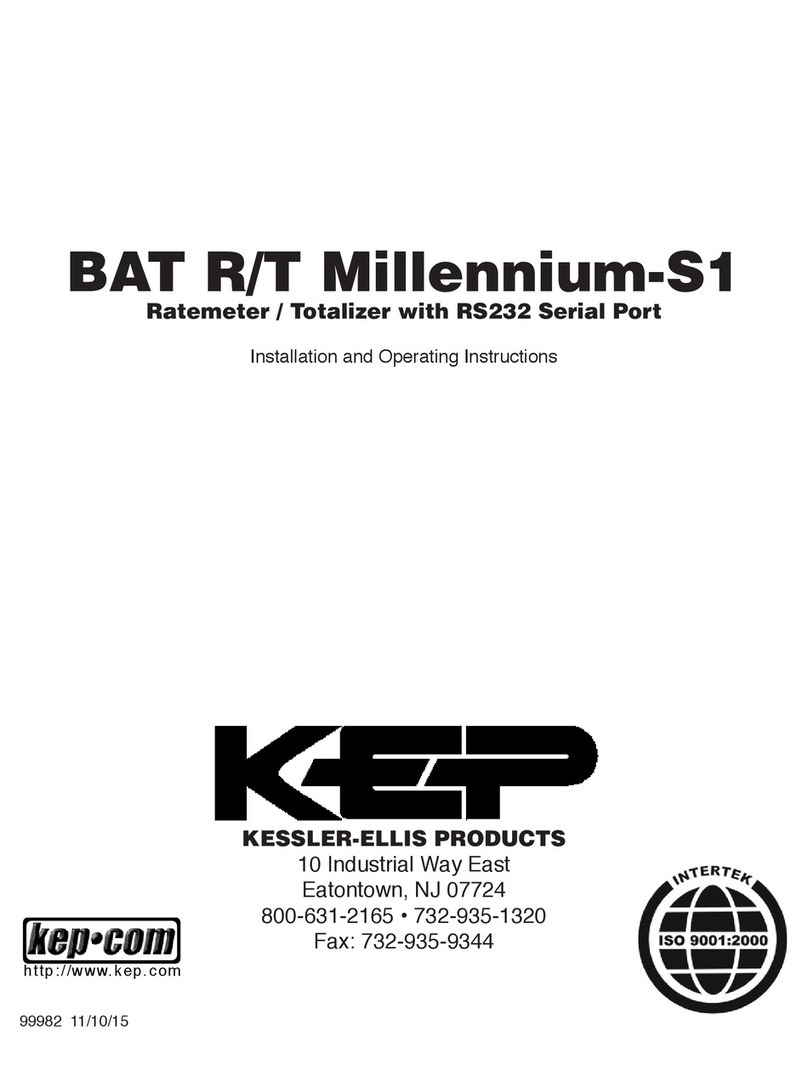
DESCRIPTION & SPECIFICATIONS
1
DESCRIPTION:
The Minitrol-S is a single input totalizer/ratemeter. The totalizer
and ratemeter each have their own 5 digit dividing scale factor.
The two 5 AMP preset relay outputs can be programmed by the
user to apply to the “A” total counter or the “A” ratemeter. The user
can view the rate, total and grand total. The B relay can be used to
create a scaled pulse output. Magnetic pickup input, analog output
and RS232 communication options are available.
SPECIFICATIONS:
DISPLAY
6 digit, 0.55" High LED
INPUT POWER:
110 VAC ±15% or 12 to 15 VDC
220 VAC ±15% or 12 to 15 VDC
24 VAC ±15% or 12 to 15 VDC
CURRENT:
250 mA DC max. or 6.5 VA AC
OUTPUT POWER (AC powered units only)
+12 VDC @ 50 mA, unregulated -10 + 50%
TEMPERATURE:
Operating:
+32°F (0°C) to +130 F (+54°C)
Storage:
-40 F (-40°C) to +200°F (93°C)
MEMORY
EEPROM stores data for 10 years if power is lost.
INPUTS:
3: High Impedance DC pulse input 4-30 VDC (high), Open or 0-
1 VDC (low),10 KΩimp. 10 kHz max. speed.
3M: Mag. Input, Rate/total input only, accepts 30mV input (50 V
max. P/P) signals 10 KΩimp. 5 kHz max. (Inhibit input, 4-
30V)
NOTE: The Mag. input has filtering as follows: 30mV trigger level up
to 300Hz , 0.25 V trigger level at 5KHz
RESET:
Front Panel: Resets displayed total value and control output.
Remote: 4-30 VDC negative edge resets total and
relay control output.
NOTE: The remote reset does not reset the grand total.
K FACTOR/SCALING
The K-Factors are used to convert the input pulses to engineering
units. The 5 digit K-Factor dividers, with decimal keyed into any
position, allow easy direct entry of any K-Factor from 0.0001 to
99999. Separate factors may be entered for rate and total.
CONTROL OUTPUTS:
Relays:
2 each N.O. Relay; 5 Amps120/240 VAC or 28 VDC.
(N.C. relay contacts and NPN transistor output
available with solder jumpers. Transistor output is
internally pulled up to 10 VDC through relay coil, sinks
from 10 VDC to .5 V @ 100 mA)
Analog Output:
An optional 4-20mA (0-20mA) output is available for
the Minitrol series. The output can be programmed
to track rate or total. This feature is available by
adding suffix A to the part number. Connections are
via a 2 terminal pluggable screw connector.
Programming is accomplished by using the front panel
in conjunction with rear dip switches.
Accuracy: ±0.25% FS
Compliance Voltage: 3 to 30 VDC non inductive.
RS232/RS422 SERIAL INTERFACE
If the serial interface option is supplied, up to 99 units can be linked
together. (The terminal addressing the unit must be capable of
driving all loads in the loop.) Unit status and new set points can be
communicated by serial communication. Mode changes, however,
must always be made on the front panel. Data is transmitted at
selected baud rates using standard seven bit ASCII characters and
parity with two additional bits of “Start” and “Stop” to make up the
standard ten bit character.
Data is received and transmitted over standard EIA RS232 or
RS422 levels. Each 10 bit character is made up of a start bit, 7 bit
ASCII code, parity bit and stop bit. Unit number, baud rate and
parity are entered in the “Program Setting” set up mode and remain
in memory even if power is off.
Note that the input impedance of RS232 is 3K or 7K Ohm worst
case. The terminal addressing the unit must be capable of driving
all loads in the loop. RS422 input impedance is much higher and
there is usually no problem driving 25 units. Unit serial transmit line
remains in a high impedance “OFF” state until addressed.
